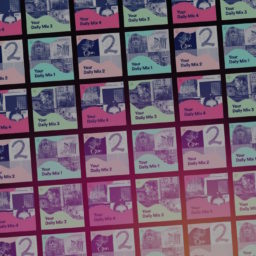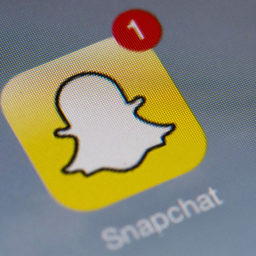When the urge to get creative strikes, here’s how you can drop a beat fast.
It’s not only the internet’s websites and platforms that change. Under the hood, our browsers are getting more powerful, allowing for rich experiences without having to manually download apps.
Here are ten fun tools to drop beats right from your desktop browser.
Splice Beat Maker
https://splice.com/sounds/beatmaker

How it describes itself: Make and share beats in your browser.
How it works: Splice Sounds is a subscription service with a million loops, samples and presets for producers. Beat Maker allows people to dig into Splice’s library for free. You can check out beats created by established producers, remix those beats, or just start from scratch and program something yourself.
First impression: You can easily spend hours on this. What I find most remarkable about it is that this is a perfect example of marketing done right.
108

How it describes itself: A minimal beat machine in the browser.
How it works: You see a dot moving around a circle and you can populate the circle with drum samples by using your keyboard. Each time the dot hits the sample, it plays it. It runs at 108 beats per minute, hence the name.
First impression: Easy if you want to mess around quickly put some drum pattern together. Unfortunately everything gets placed in a grid: this makes it hard to create something terrible, but also hard to play with timings and get really creative.
Blokdust
How it describes itself: BlokDust is a free to use web-based music, sound and instrument creation app.
How it works: The web app gives you a tool box to generate tones, feed them to effects, link them to interactive components like your computer’s keyboard or even a MIDI controller, and has different tools that lets you power up the events. Because of the latter, you can create self-playing devices that generate soundscapes (click here for an example that lets you interact through the bottom row of your keyboard).
First impression: Very cool, very powerful. Not only do they provide an extensive set of guides and tutorials, but the project is also open source and the developers invite people to learn from, fork, or contribute to the code.
Sample Stitch

How it describes itself: Try re-constructing the samples of popular producers’ beats.
How it works: It takes the original samples used by 3 popular hiphop tracks and lets you recompose the beat using your keyboard.
First impression: Fun to play around with and try to build something cool. It’s good to read the stories at the bottom of the page, too. It gives a perspective about the amount of work hiphop producers put into digging for samples, picking the right ones and constructing beats out of them. One downside: at the moment of writing the share-function is busted.
Incredibox

How it describes itself: Incredibox is a musical app in which you can quickly and easily create a mix by running a band of beatboxers.
How it works: You start with one guy. When you give him an accessory like a hat or sunglasses, he’ll start beatboxing or singing. As soon as you dress someone up, another guy appears until finally the box is filled with 6 beatboxers working on your song.
First impression: This one’s truly for everyone. It’s so easy that it’s impossible to make anything that doesn’t sound good. There are 4 editions, I suggest you start with the newest ones. Each edition has special unlockable moments that you have to find by combining the right elements… so it’s a game, too!
Voice Spinner
https://musiclab.chromeexperiments.com/Voice-Spinner

How it describes itself: Spin the spinner like a record player — slow, fast, forward, backward — to hear how it affects the sound.
How it works: Click the record icon in the middle. Say something, sing something, rhyme something. Then use the slider below to play it back in various ways.
First impression: Cute little tool to play around with. Especially fun to then play some music from another player and try to layer your vocal on top of it. Highlighting this, because it’s part of the Google Chrome Music Lab which has a dozen other music making tools for in your browser.
YUME

How it describes itself: YUME is an interactive musical exploration created to promote the new album from ambient artist Helios. Manipulate sound and explore a dream-like world.
How it works: You‘ll see a screen with diamond-shaped objects, or perhaps kites, that you can drag to manipulate the sound. As you play around with them, you can explore other areas in the audiovisual world, which will have other configurations.
First impression: The initial screen is a little bit confusing, but that ends up really encouraging exploration, which is the right way to bring people into these types of experiences.
Sampulator

How it describes itself: Music production made easy. Create beats in your browser.
How it works: Your entire keyboard gets turned into a sampling machine. It allows you to program drums, including some great 808 sounds, keys, vocal samples, and more. If you’re good, you can make fantastic beats like this.
First impression: This is right up my alley, because I love 808 driven beats and it has some samples common in the juke and jersey club genres that I often listen to. I like that you can play stuff live and then drag them around in the grid, in case your timing was off.
wavepot

How it describes itself: The digital audio workstation of the web.
How it works: A better description would be: live programming music. If you’re a decent programmer, you can make some cool things with this. If you’re not, then just load up one of the examples and start editing numbers and variables and see what happens.
First impression: Reminds me of ‘algoraves’ where people live program music in front of audiences. I wasn’t able to get the sounds out of it that I wanted to, but the interface (or lack thereof, I guess) makes up for it.
Orbit Sampler
http://www.dreampipe.io/orbit/

How it describes itself: Another browser-based music production app by DreamPipe.
How it works: Despite the lackluster description, it’s one of the more interesting tools. It lets you arrange your samples in circular sequences, which is sometimes argued to be a more intuitive way to visualize rhythms than the typical bar line.
First impression: Save it for the weekend or a late evening. It’s very powerful, but a bit hard to do something quick, because of the level of detail it offers. You can spend hours and hours on this.
Having fun? Drop some of your most creative work in the responses to this piece. No time to play and want to listen to music made by others? Click here for some great tools to discover something new.














